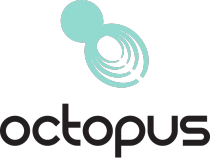NEURELIS PRESENTS STUDIES ON SEIZURE CLUSTERS AT THE AMERICAN EPILEPSY SOCIETY ANNUAL MEETING
Ten poster presentations highlight analyses of immediate-use seizure medication and treatment for seizure clusters
SAN DIEGO, Dec. 6, 2024 /PRNewswire/ -- Neurelis, Inc., today announced details of its presentations at the American Epilepsy Society (AES) Annual Meeting to be held December 6-10 in Los Angeles. The collection of ten posters highlights analyses of immediate-use seizure medication for treatment of seizure clusters. A wide variety of presentations include pharmacokinetics (PK) and safety analyses from the study of VALTOCO® (diazepam nasal spray) for the treatment of seizure clusters in patients with epilepsy aged 2-5 years, time to treatment and seizure cluster termination, treatment of prolonged seizures within a cluster, as well as potential drug effects beyond the immediate treated seizure cluster, implications of seizure clusters in the epilepsy monitoring unit, and development of evidence-based self-management criteria encompassing the use of immediate-use seizure medication.
"The AES Annual Meeting is an important opportunity for the epilepsy community to engage with each other on critical research and the latest advancements in the field," said Adrian L. Rabinowicz, MD, Neurelis Chief Medical Officer. "We are proud to have such a strong set of pre-clinical and clinical presentations to share at this year's meeting and look forward to connecting with healthcare practitioners, researchers, people with epilepsy, and care partners as we share a common mission to improve quality of life for people with epilepsy."
Neurelis' presentations at the Annual Meeting include the following.
Poster Session 1, December 7th 12:00 PM to 2:00 PM PT:
-- Exploring Proposed Recommendations for Acute Cluster Treatment and Rapid
and Early Seizure Termination Using Data from a Long-Term Safety Study
of Diazepam Nasal SprayPresentation of data from the long-term safety
study of diazepam nasal spray explores clinical evidence supporting
recent expert consensus recommendations for medications appropriate for
acute cluster treatment and for rapid and early seizure termination. The
study objective was to examine a single immediate-use seizure medication
for both acute cluster treatment and rapid and early seizure
termination, with the potential to simplify patient care. Findings in
the study demonstrate the benefit of diazepam nasal spray use for both
termination of acute seizure clusters and prolonged seizures within
clusters.
-- Effect of Diazepam Intervention on Seizure-Cluster Expression in a Rat
Model of EpilepsyThis poster shares data from a preclinical study
investigating the possible impact of diazepam on seizure cluster
expression in a post-kainic acid status epilepticus (KASE) rat model of
chronic epilepsy. Results demonstrated that in this rat model,
expression was consistent with potential disease-modifying effects on
seizure clusters, including reduced seizure severity, interseizure
interval, and stability within clusters, supporting further exploration
of the potential disease-modifying effect of diazepam.
-- Is Disease Modification in Seizure Clusters Possible? Results From the
Long-Term Safety Study of Diazepam Nasal Spray A subgroup analysis of
patients treated with diazepam nasal spray in a long-term open label
safety study was evaluated to assess the intervals of treated seizure
clusters (SEIVAL) over time as a potential indicator of disease
modification. Results were consistent across subgroups based on age,
sex, with and without change in concomitant medications, pediatric
developmental/epileptic encephalopathies, with prolonged seizures, and
with self-administration of diazepam nasal spray.
Poster Session 2, December 8th 12:00 PM to 2:00 PM PT:
-- Treatment of Prolonged Seizure with Diazepam Nasal Spray: A Post Hoc
Cohort AnalysisProlonged seizures within a seizure cluster, treated with
diazepam nasal spray within 5-15 minutes of seizure onset, were
investigated in a post hoc subgroup analysis of a Phase 3 long-term
safety study. Across age, seizure type, and high treatment usage
subgroups, similar times to seizure termination were observed. Results
also show low use of second doses demonstrating preserved effectiveness
in seizures that have become prolonged within a cluster.
-- Pharmacokinetic Characteristics of Diazepam Nasal Spray in Children with
Epilepsy 2 to 5 Years of AgeThe PK of diazepam nasal spray for treatment
of seizure clusters in patients 2-5 years of age was evaluated. Results
demonstrated that diazepam nasal spray was readily absorbed with similar
exposure for patients aged 2-3 years and 4-5 years and also showed a
consistent PK profile in 2-5 year olds with that of older children and
adults aged 6-59 years.
-- Safety Profile of Diazepam Nasal Spray in Patients Aged 2-5 Years from
an Ongoing, Open-Label 180-Day Safety Period Following Pharmacokinetic
Sampling in a Phase 1/2a StudySafety of diazepam nasal spray in patients
aged 2-5 years was assessed through the 180-day open-label safety
period. Overall, the safety profile of diazepam nasal spray was similar
to that established for older children and adults.
-- Second Dose Use as a Proxy for Effectiveness of Diazepam Nasal Spray in
Patients with Epilepsy Aged 2-5 Years: Interim Results from a Phase 1/2a
StudyThe effectiveness of diazepam nasal spray in the 2-5 years age
group was evaluated using the proportion of second doses (doses given
within 24 hours of initial doses) used to treat seizure clusters as a
proxy for effectiveness. Results showed comparable rates of seizure
clusters treated with second doses among pediatric patients aged 6-17
years in the long-term safety study of diazepam nasal spray, supporting
the effectiveness of the age-based dosing regimen in patients aged 2-5.
-- Potential Adverse Events of Clinical Interest with Use of Diazepam Nasal
Spray in Children: Interim Results from an Ongoing Open-Label,
Pharmacokinetic and Safety StudyTreatment-emergent adverse events
(TEAEs) of clinical interest associated with the use of benzodiazepines
were assessed in patients aged 2-5 who received at least one dose of
diazepam nasal spray through the 180-day open-label safety period of a
Phase 1/2a pharmacokinetic and safety study. Treatment-related TEAEs of
clinical interest were uncommon and primarily nasal, with none reported
in more than one patient. There were no clinically significant changes
in vital signs or laboratory values and no new safety signals of
clinical interest in children aged 2-5 years.
-- Immediate-Use Seizure Medication for Acute Repetitive Seizures in the
Epilepsy Monitoring Unit: Experiences from an Expert PanelA pilot survey
of a group of expert epileptologists discussed practice experience with
immediate-use seizure medications (ISM, rescue) before, during, and
after long-term video-electroencephalogram monitoring (LTVEM) in the
epilepsy monitoring unit (EMU). Results highlighted the importance of
expanding this research and the potential value of expert guidelines.
-- Development of Self-Management Tool for Individuals with Seizure
ClustersThe study presents an ongoing study focused on self-management
for people with epilepsy and a history of negative health events
(SMART), an evidence-based program investigating integration of
immediate-use seizure medications (rescue medication) into the
self-management program.
The American Epilepsy Society is dedicated to advancing knowledge and supporting evidence-based clinical practice to improve outcomes for persons with epilepsy and their families.
About Neurelis
Neurelis, Inc., is a neuroscience company focused on the development and commercialization of therapeutics for the treatment of epilepsy and neurologic disorders characterized by high unmet medical need. The FDA has approved Neurelis' VALTOCO® (diazepam nasal spray) as an acute treatment of intermittent, stereotypic episodes of frequent seizure activity (i.e., seizure clusters, acute repetitive seizures) that are distinct from an individual's usual seizure pattern in adult and pediatric patients 6 years of age and older. VALTOCO is a proprietary formulation of diazepam incorporating the science of INTRAVAIL®, a transmucosal absorption enhancement technology that enables the noninvasive delivery of a broad range of protein, peptide and small-molecule drugs. For more information on VALTOCO, please visit www.valtoco.com. For the latest scientific information on VALTOCO, please visit http://www.neurelismedicalaffairs.com/. Neurelis is also developing NRL-1004, an investigational, Phase 1 stage intranasal olanzapine for treatment of acute agitation episodes associated with schizophrenia and bipolar disorder. In addition, Neurelis is also developing NRL-1049 (previously known as BA-1049), an investigational, Phase 1 new chemical entity Rho kinase (ROCK) inhibitor, for the treatment of cerebral cavernous malformations (CCMS), a rare disorder of the central nervous system (CNS). For more information on Neurelis, please visit www.neurelis.com.
Important Safety Information about VALTOCO:
Indication
VALTOCO(®) (diazepam nasal spray) is indicated for the acute treatment of intermittent, stereotypic episodes of frequent seizure activity (i.e., seizure clusters, acute repetitive seizures) that are distinct from a patient's usual seizure pattern in patients with epilepsy 6 years of age and older.
WARNING: RISKS FROM CONCOMITANT USE WITH OPIOIDS; ABUSE, MISUSE, AND ADDICTION; and DEPENDENCE AND WITHDRAWAL REACTIONS
-- Concomitant use of benzodiazepines and opioids may result in profound
sedation, respiratory depression, coma, and death. Reserve concomitant
prescribing of these drugs for patients for whom alternative treatment
options are inadequate. Limit dosages and durations to the minimum
required. Follow patients for signs and symptoms of respiratory
depression and sedation.
-- The use of benzodiazepines, including VALTOCO, exposes users to risks of
abuse, misuse, and addiction, which can lead to overdose or death. Abuse
and misuse of benzodiazepines commonly involve concomitant use of other
medications, alcohol, and/or illicit substances, which is associated
with an increased frequency of serious adverse outcomes. Before
prescribing VALTOCO and throughout treatment, assess each patient's risk
for abuse, misuse, and addiction.
-- The continued use of benzodiazepines may lead to clinically significant
physical dependence. The risks of dependence and withdrawal increase
with longer treatment duration and higher daily dose. Although VALTOCO
is indicated only for intermittent use, if used more frequently than
recommended, abrupt discontinuation or rapid dosage reduction of VALTOCO
may precipitate acute withdrawal reactions, which can be
life-threatening. For patients using VALTOCO more frequently than
recommended, to reduce the risk of withdrawal reactions, use a gradual
taper to discontinue VALTOCO.
Contraindications: VALTOCO is contraindicated in patients with:
-- Hypersensitivity to diazepam
-- Acute narrow-angle glaucoma
Central Nervous System (CNS) Depression
Benzodiazepines, including VALTOCO, may produce CNS depression. Caution patients against engaging in hazardous activities requiring mental alertness, such as operating machinery, driving a motor vehicle, or riding a bicycle, until the effects of the drug, such as drowsiness, have subsided, and as their medical condition permits.
The potential for a synergistic CNS-depressant effect when VALTOCO is used with alcohol or other CNS depressants must be considered, and appropriate recommendations made to the patient and/or care partner.
Suicidal Behavior and Ideation
Antiepileptic drugs (AEDs), including VALTOCO, increase the risk of suicidal ideation and behavior. Patients treated with any AED for any indication should be monitored for the emergence or worsening of depression, suicidal thoughts or behavior, and/or unusual changes in mood or behavior.
Glaucoma
Benzodiazepines, including VALTOCO, can increase intraocular pressure in patients with glaucoma. VALTOCO may only be used in patients with open-angle glaucoma only if they are receiving appropriate therapy. VALTOCO is contraindicated in patients with narrow-angle glaucoma.
Neonatal Sedation and Withdrawal Syndrome
Use of VALTOCO late in pregnancy can result in sedation (respiratory depression, lethargy, hypotonia) and/or withdrawal symptoms (hyperreflexia, irritability, restlessness, tremors, inconsolable crying, and feeding difficulties) in the neonate. Monitor neonates exposed to VALTOCO during pregnancy or labor for signs of sedation and monitor neonates exposed to VALTOCO during pregnancy for signs of withdrawal; manage these neonates accordingly.
Risk of Serious Adverse Reactions in Infants due to Benzyl Alcohol Preservative
VALTOCO is not approved for use in neonates or infants. Serious and fatal adverse reactions, including "gasping syndrome," can occur in neonates and low-birth-weight infants treated with benzyl alcohol-preserved drugs, including VALTOCO. The "gasping syndrome" is characterized by central nervous system depression, metabolic acidosis, and gasping respirations. The minimum amount of benzyl alcohol at which serious adverse reactions may occur is not known.
Adverse Reactions
The most common adverse reactions (at least 4%) were somnolence, headache, and nasal discomfort.
Diazepam, the active ingredient in VALTOCO, is a Schedule IV controlled substance.
To report SUSPECTED ADVERSE REACTIONS, contact Neurelis, Inc. at 1-866-696-3873 or FDA at 1-800-FDA-1088 (www.fda.gov/medwatch).
Please read full Prescribing Information, including Boxed Warning.
Contacts:
Brittany Bradrick, Chief Operating Officer and Chief Financial Officer, +1 858 251 2100
View original content to download multimedia:https://www.prnewswire.com/news-releases/neurelis-presents-studies-on-seizure-clusters-at-the-american-epilepsy-society-annual-meeting-302324997.html
SOURCE Neurelis, Inc.



